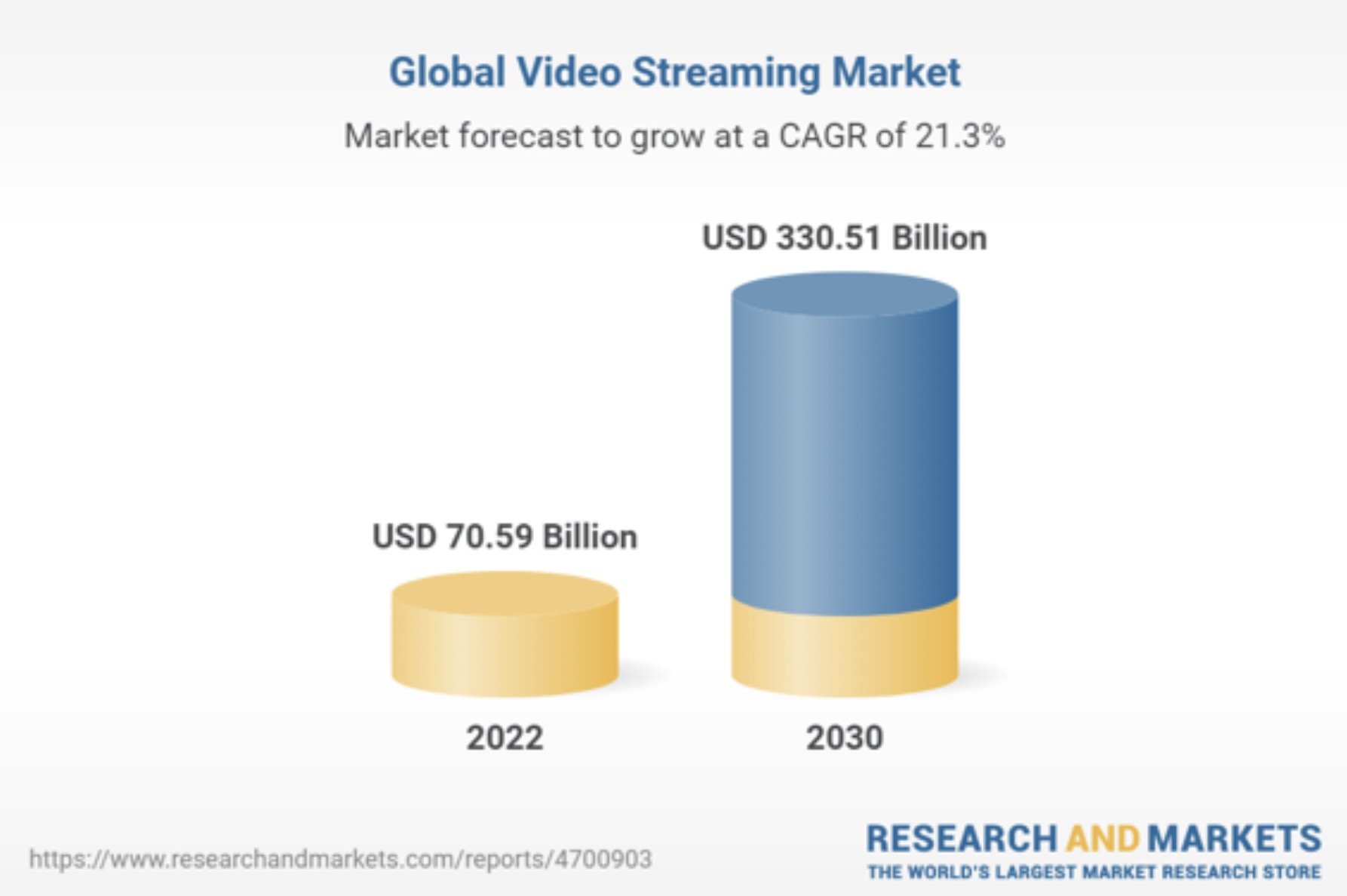
Industry Discussion | Author: Haroon Qureshi, Mindshare
LET’S TAKE A QUICK SNAPSHOP OF THE STREAMING INDUSTRY
In the midst of the pandemic, streaming (live video technology) became nothing short of essential. Many industries have begun leveraging streaming technology, from streaming video content to live IRL (In real life) music events to fashion shows to healthcare services to automobile sales. This has resulted in a significant growth of the industry. According to the latest video streaming marketing report, the video streaming market size is expected to reach USD 330.51 billion by 2030, registering a CAGR of 21.3% from 2022 to 2030.

Despite steady growth in recent years, the pandemic & other technological advancements have further accelerated its growth. Technological advancement in spaces such as gaming, 5G & now web 3.0.
So, what will web 3.0 mean for the streaming industry and how it will impact the streaming industry ecosystem which is driven by platforms, creators and users?
FIRST, WHAT DO WE MEAN BY WEB 3.0 FOR STREAMING?
The era of ‘Web1’ consisted of a network of static pages where the vast majority of users were consumers, not creators.
The web we know today is largely based on the idea of ‘the web as a platform’ and heavily dependent on user-generated content. The majority of large publishers’ and creators’ content properties are controlled by platforms, such as Netflix, VIU, Hotstar, Disney+, YouTube, TikTok and Facebook.
Upon the arrival of Web3, most users will be connected via a decentralised network and have access to their own data. In this third generation of internet, decentralised blockchains serve as a foundation for applications and services. In the blockchain system, there is no arbitrary central authority but rather a consensus system that regulates the system distributedly.
Some early benefits of web3 that can be seen within the streaming industry include:
Ownership of the content: At its core, Web3 places ownership in the hands of its creators. Content producers will be able to share and sell their work in any way they see fit, thanks to blockchain technology and decentralised web curation.
This is going to make a big change in the current web2 model where big platforms are controlling the distribution and making real money as compared to the creators.
Linktree data revealed that of the 200 million people participating in the creator economy, only 12% of those doing it full-time make more than $50,000 per year. The company also found that 46% of full-time creators make less than $1,000 annually.
In addition to this, web3 will also provide greater accessibility of more secure tools for the users and creators to own, control and monetise their data vs dependency on 3rd party platforms. Today, most of the streaming & video social platforms (web2) own the audience and the data. At any moment, these ecosystems might change the algorithms and rules and take over the audience (and monetisation) a creator has meticulously built over time. As a result, they can’t directly engage with their audience outside of the platform’s environment because they don’t have access to the necessary data.
Decentralised video streaming platforms, on the other hand, are tackling those issues directly and creating a better environment for users. While they are considerably less widespread when compared to current available video platforms, some provide decentralisation, open-source development, transparent terms & conditions, improved search algorithms, privacy-focused approaches, alternative payment systems for content creators (cryptocurrencies), and more.
Some of the decentralised streaming platforms that are making headwinds in this space include FLIXXO, DTUBE and LBRY.
Web3’s cutting-edge technology and solutions will revolutionise the video streaming industry. Decentralisation allows a vast array of new incentive models to be developed through cryptocurrency.
It is fascinating to see how many projects are experimenting with different models to find the most profitable and sustainable one. Only time will tell which projects will survive.
As Web3 matures, it will definitely alter the shape of the streaming industry, benefit users and creators, and provide new monetisation models.

